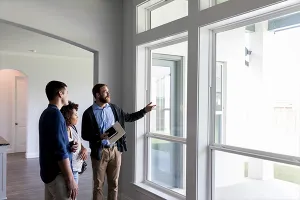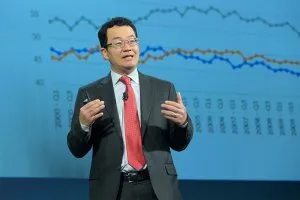Because there are so many challenges that come with adaptive reuse, the NATIONAL ASSOCIATION OF REALTORS® (NAR), is working hard to encourage Congress to create tax incentives. Evan Liddiard, CPA, director, Federal Taxation | Federal Policy and Industry Relations for NAR, pointed to legislation introduced in both the U.S. House and the U.S. Senate that would provide a limited tax credit for adaptive reuse — The Revitalizing Downtowns Act.
The Act would provide a 20-percent tax credit for qualified property conversion expenditures. The credit is modeled on the historic rehabilitation tax credit and can be used for office buildings that are at least 25 years old at the time of the conversion. Under the bill, a conversion to housing may qualify for the credit if the project provides at least 20 percent affordable housing dedicated to households whose income does not exceed 80 percent of the Area Median Income.
Federal and state tax credits often are part of the financing stack that make adaptive reuse viable. But under current law, federal tax credits are limited to historic buildings and often require specialists in the system to consult on the deal, due to the labyrinth of rules.
“This Act would mainly help older class C and Class B office buildings. We are pushing for something broader that would incentivize the conversion of all kinds of commercial property and not just office buildings. We are working with a coalition of more than a dozen real estate interest groups to support this,” said Liddiard, emphasizing that the tax credits are justified by the public good that would be created by bolstering the commercial real estate sector, the construction of more residential units, and the resulting new jobs and boost to the economy that come from a successful conversion.
The coalition has asked the Act’s sponsors to expand it to also cover malls, shopping centers, industrial properties, hotels and even schools and to extend the incentive to real estate investment trusts that invest in these kind of revitalization projects. A letter of supportpdf for the new tax credits emphasizes that adaptive reuse can help address the severe housing shortage as well as post pandemic repositioning of real estate. The letter emphasizes that adaptive reuse adds to the tax rolls that virtually all local governments rely on to fund municipal services.
“We are looking for bipartisan support,” Liddiard said. “A successful conversion takes an unused building and makes it worthwhile. It boosts the supply of housing and especially affordable housing. It’s a boon to the economy because of all the jobs created in redeveloping the buildings and the new capital infused in the neighborhoods.”
There are myriad benefits that come with recycling an old building.
There are myriad benefits, such as energy and climate savings that come with recycling an old building rather than razing it and using all new materials for a fresh building. Redeveloping within existing infrastructure saves money because none has to be spent on water, sewer, roads and other services because they are already there.
“These are risky projects. Some buildings don’t easily lend themselves to adaptive reuse. That justifies the tax credits,” he said.
Dan Schmidt, principal at JDS Companies in Columbus, Ohio, has been doing adaptive reuse for a quarter century. He appreciates the ability to give new life to an old building, but understands the financial challenges.
The Jeffrey Manufacturing Co. was founded in the 19th century and became one of the world’s first and largest makers of mining machinery. At one time, the firm employed about 5,000 people in Columbus. But by the later 20th century, the assets had been sold by the Jeffrey family and the buildings were ripe for redevelopment.
Courtesy of JDS Companies/CITYSPACE
The Jeffrey Manufacturing Company office building was transformed into apartments in the Italian Village neighborhood of Columbus, Ohio.
The Jeffrey complex is in Italian Village, an urban neighborhood just north of Downtown Columbus and adjacent to the Short North Arts District. Schmidt acquired the vacant headquarters and research and development buildings plus adjacent land where part of a factory had been demolished. He created more than 100 unique residences which replicate the distinctive look of the razed factory. The project won design awards.
“We gutted the HQ building and connected it to the R&D buildings with a bridge,” he said. “The R&D building was interesting because it had a railroad track going through the center of it. We kept the old board room for the HQ building and its two working fireplaces. We kept the stained-glass windows and commissioned large murals on the sides of the buildings.”
Schmidt said there were challenges, including building an exterior elevator to serve industrial buildings that didn’t have residential elevators and necessary environmental remediation, among others. Today, there’s a healthy waiting list for the apartments. He noted that projects like his could benefit from historic tax credits and other programs. Only a small city-of-Columbus tax abatement was in place at the time he developed.
Johnny Noon, NAR’s director of Engagement/Commercial, said adaptive reuse is a hot topic among members, as is the lobbying for more tax credits to support the challenges of such redevelopment.
Conversion of an old office can be a way of creating more housing.
“Conversion of an old office building into residential can be expensive. Residential has different infrastructure, such as plumbing, HVAC, and electrical systems,” he said. “But this can be a way of creating more housing. I’ve even seen old motor lodges converted for senior living. There is demand for repurposing structures.”
Noon said NAR’s commercial committee is focused on encouraging local REALTOR® associations to work with local government to ensure that zoning allows adaptive reuse. He said a lot of parking ordinances are prohibitive for older buildings, which were built before the automobile, so they don’t have a parking pedestal within or an attached parking deck.
“Our research teams are asking more about [adaptive reuse]. Our members are asking for classes on it,” he said. “When you think about it, mom and pop landlords provide a lot of affordable housing. At a time of a housing crisis, we need tax incentives and zoning that supports people who are doing adaptive reuse on a smaller scale.”
Michael Mouron, founder of Capstone Real Estate, has a long history of reviving classic and historical buildings in his Birmingham, Ala., base and beyond. He even purchased the 1929 Art Deco downtown Akron, Ohio, building that was home to the Pulitzer-winning powerhouse Beacon Journal Newspaper. He tried to turn it into office space for a branch of FedEx then a new Akron City Police headquarters and is still searching for an adaptive reuse after those deals failed to come to fruition.
Mouron has been a developer for four decades and roughly 20 percent of his projects have involved adaptive reuse of historic buildings.
“If a building is in a good location — and that doesn’t mean it has to be at the corner of Main and Main Streets — if it has some innate charm to it, it’s a great candidate for adaptive reuse,” he said. “If it has high ceilings and some good onsite parking, it can work.”
Birmingham’s Federal Reserve building had been vacant for 15 years before Mouron acquired it. The building now is 100 percent occupied, including two levels of basement, the upper one containing a fitness center. The ground floor has a branch bank and restaurant. The second floor has an advertising/marketing firm, the third a real estate company and a law firm occupies the fourth and fifth floors.
Courtesy of Craig Roderick American Road Trip Photography
The vacant Federal Reserve building in Birmingham, Ala., was restored into an office and retail complex
“The key to effective historic renovation is state and federal historic tax credits. There’s a misconception that historic renovation should be cheaper than new construction,” he said. “People say ‘you have a building already, why would it be so expensive?’ Renovation certainly can be less expensive, but if you’re really trying to do first-class historic renovation using matching materials, such as granite beveled stone; drilling through a federal bank vault; preserving huge windows; putting in HVAC to heat and cool 20-foot-tall rooms, not 8-foot ones — it’s going to be expensive.”
“I have $25 million invested in the historic Federal Reserve. It appraised for $18 million. The difference between the $25 million and the reasonable $18 million appraisal was state and federal tax credits. The cost to restore the building would not manifest itself in rents that would justify the investment. So, tax credits rejuvenated a long-vacant building and created a restoration so appealing that it ran on the cover of a National Park Service report. The backup bid to my development proposal was a surface parking lot — the entire building would have been razed.”
Mouron currently is seeking office tenants for the Streamline Moderne Greyhound Bus station in Birmingham, a vacant building historic for its 1961 stop by the Freedom Riders. The building is refurbished into a shell, awaiting a build-to-suit tenant.
“With adaptive reuse, I’ve found that most people can’t walk into an old building in need of repair and be able to envision what it can become. For that reason, I’ve always done the core and shell of historic building first — so people can at least see it restored,” he said.
Brandi Snowden, NAR’s director of Member and Consumer Survey Research, said surveys done before and during the pandemic showed that zoning was often the biggest hurdle for adaptive reuse. When hotels experienced extreme vacancy rates during COVID, a lot of people looked at alternate uses. But even though hotels already had multiple units and fairly high density, many cities made it difficult to convert hotel rooms to small workforce or senior housing units.
A case study compiled by an NAR colleague of Snowden cited the Luna Lodge redevelopment as a prime example of overcoming hurdles.
The Pueblo Revival-style 1940s vintage Route 66 motel in Albuquerque, N.M., was on the National Register of Historic Places, but was declared unsafe to occupy and substandard when a city inspection discovered a litany of issues including raw sewage on the site. The city approved rezoning to allow conversion to affordable units, but a neighbor litigated the zoning and the project endured 16 months of delay while the case went to the New Mexico Court of Appeals.
Zoning is often the biggest hurdle for adaptive reuse.
Courtesy of Affordable Tax Credit Coalition.
The historic Luna Lodge on Route 66 in Albuquerque, N.M., was converted into affordable housing
Ultimately, the historic features were preserved, and 28 units of affordable housing were created, earning an award from the Affordable Housing Tax Credit Coalition. The NAR report notes the heavy subsidies the project required, including: $3.3 million from out-of-state buyers of tax credits, $1.24 million from a City of Albuquerque Workforce Housing Construction Loan Grant, $344,120 in historic tax credit equity, $210,000 from the Federal Home Loan Bank of Dallas Affordable Housing Program and $100,000 from the Environmental Protection Agency/New Mexico Environment Department.
Stephen L. Atkins, principal & managing director of SouthEast Development Group in Jacksonville, Fla., helped preserve that city’s most-treasured landmark after several attempts failed. Barnett National Bank once was Florida’s largest commercial bank, and its 1926-vintage, 18-story Renaissance Revival-style headquarters would be at home among the best of New York or Chicago skyscrapers.
The redeveloped building features 107 residential units on the top 13 floors, offices below that and a bank branch on the ground floor. A change in office tenants may allow for another 45 apartments in the building.
Courtesy of Root Photography.
The Barnett National Bank building in Jacksonville, Fla., was repurposed into a mixed-use development.
“We delivered the project right in the middle of COVID, but it had 100-percent occupancy in a few months, and we have a waiting list of 40 or more,” Atkins said. “The smallest studio is about 540 square feet and the biggest two bedroom is more than 1,000. It’s mostly young professionals, but we have a mix of business executives, empty nesters, the arts community.”
Atkins said the pro forma calculated $1.75 per square foot to make the deal work and new leases are going at $3 per square foot — an endorsement for urban living in Jacksonville. Twenty percent of the Residences at Barnett rent as workforce housing.
“We didn’t receive any incentives, other than financing. We financed under the new market tax credit structure. Also, my company has a subsidiary certified to do tax credits, so we used federal historic tax credits.”
He noted that occupying the Barnett building helped spur his more than $70 million mixed-use project across the street, featuring an Autograph Collection hotel, 170 multifamily units and commercial developed out of a trio of historic buildings plus an infill new build.
The thing about adaptive reuse is if you don’t make it work and support it, once the great buildings are gone, they’re gone.
“Jacksonville, like a lot of cities, was not the greatest steward of the golden age of buildings,” he said. “A lot of great buildings were torn down and replaced with postmodern stuff. The thing about adaptive reuse is if you don’t make it work and support it, once the great buildings are gone, they’re gone. No amount of subsidy can take you back in time to preserve a razed building. People want to be in a vibrant downtown environment and converting old office buildings to residential creates that.”
Tracy Hadden Loh is a Fellow at The Brookings Institution Metropolitan Policy Program-Bass Center for Transformative Placemaking. She co-authored an inclusive neighborhood revitalization report proposing that the federal government partner with state and local governments to facilitate the local ownership of real estate in disinvested urban and rural commercial corridors.
The report looks at more than $100 billion spent by Community Development Block Grant, empowerment zone and opportunity zone programs, plus a host of other federal spending programs and their relative failure at uplifting poor, marginalized communities. Many of the failures are because the programs are directed at outside capital, which doesn’t deliver cash to local entrepreneurs that can build wealth in a poor community and who understand the unique needs of the community. Funding zones also often are too geographically broad, so money is not invested in the areas that need targeting the most.
The Brookings report proposes what it has dubbed direct seed funding. “Through this program, the Treasury Department would establish and capitalize state revolving loan funds that would provide direct seed capital through a combination of low-interest, potentially forgivable debt and working equity to locally managed neighborhood investment funds. A one-time, $2-billion capitalization of these funds would yield $80 million at 4-percent interest to loan annually without touching the principal. A 10-percent add-on to each transaction for working equity to support local capacity-building would consume less than 0.5 percent of the principal balance.”
The local neighborhood investment funds would allow residents of eligible geographic areas — together with other public, private, and nonprofit investors — to collectively purchase and develop or redevelop land or buildings in commercial corridors in the targeted areas.
“Transformative placemaking focuses on neighborhoods and places at a hyper-local scale. It brings together programs, policies and practices that are intersectional,” Loh said. “It combines the best of economic development and infrastructure and the environmental movement.”
To increase the odds of success, the report suggests that federal funds flow through to local areas only with “preconditions for growth present and some assets for investment to scaffold onto,” such as potential transit-oriented development; anchor institutions like universities and hospitals; existing initiatives aimed at supporting local entrepreneurship and business incubation; cultural activity clusters; or commitments to build rural infrastructure.
“At the local level, we must break down silos [and] get the planner talking to the economic developer talking to the director of public works etc.,” Loh said. “Anything else is pushing a boulder uphill.













